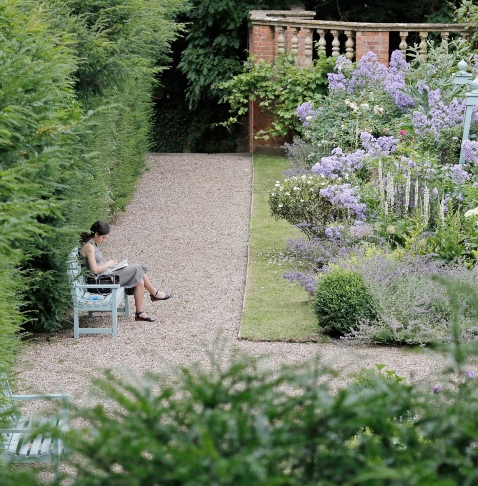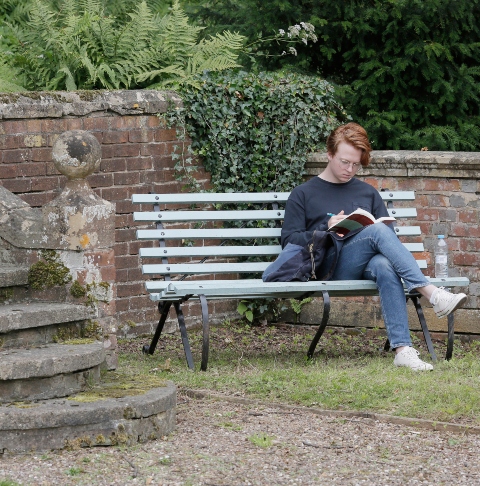We all knew that the day was coming when the letters would be unsealed. We all speculated about what they would contain. Some of us expected a muted satisfaction; many more anticipated outright disappointment. How could these letters—sealed for over 50 years—possibly satisfy our collective curiosity and desire? We both held our breath and steeled ourselves.
We were all wrong. The letters have proven more rich, expressive, and revelatory than we could have imagined. They not only recast the story of his life; they are reshaping our understanding of his imaginative world and poems that critics have scrutinized for a century. Previously unknown letters from Virginia Woolf, James Joyce, and other modernist writers have come to light, tucked into his letters to Hale. And the most seasoned Eliot scholars are finding that they must begin again to take the measure of his life and work.
• • •
In 1956, Emily Hale donated to Princeton University 1,131 letters written to her by T. S. Eliot, with the stipulation that they remain sealed for fifty years after her death. We have known for some time that Eliot knew Hale in Cambridge, Massachusetts, for at least several years before he left for Europe on a temporary fellowship in 1914. He felt strongly toward her and told her so. But in the next two years, he abruptly married an Englishwoman; took a job as a schoolmaster; and, having met Ezra Pound and found encouragement in his work as a poet, decided to stay in London for good.
We have known also that Eliot’s marriage to Vivien Haigh Wood quickly disintegrated. Despite their ongoing and fruitful creative collaboration, the two spent the better part of their marriage at odds, spiraling into illness and anxiety, fearful of abandonment and reproach, and desperately unhappy. They did not divorce, but during an extended trip to America in 1932, Eliot sent his wife a formal request for separation. As Vivien’s mental condition deteriorated, her brother took steps to have her committed to Northumberland House, where she died 1947.
And we have known that Eliot and Hale had reestablished contact by 1927, before his conversion to Anglicanism (he mentions a letter from her to his confessor, William Force Stead), and that he sent her a signed copy of his poems in 1928. That they began to spend time during the summer together while she visited her family in the English countryside, and her presence seemed to be strong in “Burnt Norton,” the poem named after the manor house that they stumbled upon during a walk in 1934.
• • •
But, as these letters now reveal, Eliot’s intense and enduring attraction to Hale did not diminish after he left the U.S. The two met again in Eccleston Square in London as early as 1922, the year that The Waste Land appeared.

How could we have anticipated that Eliot—whose New England reserve and decorum make most of his existing correspondence remarkably detached and impersonal—would pour forth his feelings so unguardedly in these letters, expressing his ardent love and devotion? He even explicitly tells Hale of his plans to save their letters together for posterity, so that biographers and readers of the future will know something of the truth that underlies his work.
For those of us who have not yet visited the archive at Princeton, these revelations have come thanks to the work of Frances Dickey, former president of the International T. S. Eliot Society, who is sponsoring her regular posts about the letters. You can follow them here: https://tseliotsociety.wildapricot.org/news.
The esteemed editor of Eliot’s correspondence, John Haffenden, is preparing an edition of the letters that Faber will publish in 2021. You can hear him discuss the discovery here: https://blogs.spectator.co.uk/2020/01/the-book-club-podcast-what-do-t-s-eliots-letters-reveal.
Princeton library has recently made accessible digitized versions Emily Hale’s own personal narratives of her relationship with Eliot: https://findingaids.princeton.edu/collections/C0686/c96. And Eliot’s own statement, which he directed the Houghton Library at Harvard to release when the Hale letters were made public, is here: https://blogs.harvard.edu/houghton/the-love-of-a-ghost-for-a-ghost-t-s-eliot-on-his-letters-to-emily-hale/.
• • •
These revelations will be at the center of the 12th Annual T. S. Eliot International Summer School, which will meet 4-12 July 2020. Eliot’s biographer Lyndall Gordon (one of the very few who did, indeed, accurately gauge the true weight of the relationship with Emily Hale in his work) will offer a question and answer session; Frances Dickey will give the Annual Burnt Norton lecture on the grounds of the manor house. Novelist Ian McEwan will give the opening address. And a host of internationally renowned scholars will offer original lectures and seminars on aspects of Eliot’s life and work. Registration is limited and such intense interest has already filled a record number of places. Sign up here: www.ies.sas.ac.uk/tseliot. Scholarships still available!
Anthony Cuda, Associate Head and Associate Professor, Department of English, University of North Carolina, Greensboro. Director of the T. S. Eliot International Summer School.

